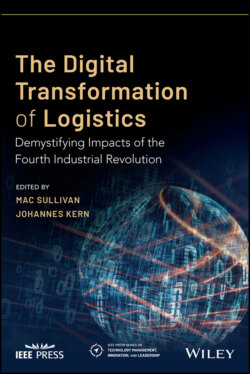Читать книгу The Digital Transformation of Logistics - Группа авторов - Страница 32
The Necessity of Economies of Scale
ОглавлениеHaving a strong in‐house IT team coupled with a CIO would certainly help companies along this path, as would a contract with a top‐tier consulting firm. However perhaps the thing that will help companies the most is a clear written understanding of their global processes and procedures. Having a roadmap of processes helps to lead the way to be able to identify where commonly occurring tasks happen and facilitate a smooth transition to improving internal mechanisms. This has been traditionally not very well documented in logistics as much of the process has relied on email communication. Companies with business processes that necessitate a significant amount of person‐to‐person communication have held on to their legacy communication mechanisms because their stakeholders valued it and there was not a more or “equally efficient digital alternative” (McAfee and Brynjolfsson 2017). Logistics, which is representative of the B2B service industry, fits this description well. Even container ship operators, multibillion‐dollar juggernauts who went through their evolution as they adopted the use of the standardized container in the 1960s and 1970s, are struggling to upgrade their communication methods (Tipping and Kauschke 2016). To learn about how China is using its Belt and Road Initiative to lift its trading partners, see Wheeler's chapter on the Digital Silk Road.
While companies like Maersk have set up shared service centers in developing countries, the adoption of cutting‐edge processes is staggeringly slow as can be seen by response times and incorrect invoicing still plaguing the industry. Processing hundreds of thousands or more of virtually identical transactions that had traditionally been handled, monitored, or audited by a human worker has been the best use case so far for process automation and implemented across the banking, insurance, telecommunication, and travel industries. This perfectly applies to logistics and transportation companies whose operations are at high risk of automation (Bughin et al. 2016). Chasing the top line has been long integrated into the mindset of logistics companies who are consistently looking for the next target customer to improve organizational health instead of looking toward process improvement.
